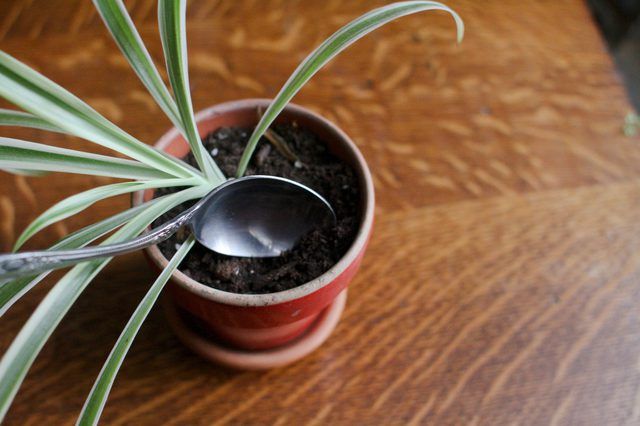Bulbs
Flower Basics
Flower Beds & Specialty Gardens
Flower Garden
Garden Furniture
Garden Gnomes
Garden Seeds
Garden Sheds
Garden Statues
Garden Tools & Supplies
Gardening Basics
Green & Organic
Groundcovers & Vines
Growing Annuals
Growing Basil
Growing Beans
Growing Berries
Growing Blueberries
Growing Cactus
Growing Corn
Growing Cotton
Growing Edibles
Growing Flowers
Growing Garlic
Growing Grapes
Growing Grass
Growing Herbs
Growing Jasmine
Growing Mint
Growing Mushrooms
Orchids
Growing Peanuts
Growing Perennials
Growing Plants
Growing Rosemary
Growing Roses
Growing Strawberries
Growing Sunflowers
Growing Thyme
Growing Tomatoes
Growing Tulips
Growing Vegetables
Herb Basics
Herb Garden
Indoor Growing
Landscaping Basics
Landscaping Patios
Landscaping Plants
Landscaping Shrubs
Landscaping Trees
Landscaping Walks & Pathways
Lawn Basics
Lawn Maintenance
Lawn Mowers
Lawn Ornaments
Lawn Planting
Lawn Tools
Outdoor Growing
Overall Landscape Planning
Pests, Weeds & Problems
Plant Basics
Rock Garden
Rose Garden
Shrubs
Soil
Specialty Gardens
Trees
Vegetable Garden
Yard Maintenance
How to Stop Mold Growth on Houseplants
How to Stop Mold Growth on Houseplants. Mold growth on houseplants is a fairly common phenomenon, but that doesn't mean that you should ignore it. Some molds are relatively harmless for some plants, such as sooty mold that grows on the honeydew produced by some insects. Other molds, such as those that cause root rot, may cause your plants to die....
Mold growth on houseplants is a fairly common phenomenon, but that doesn't mean that you should ignore it. Some molds are relatively harmless for some plants, such as sooty mold that grows on the honeydew produced by some insects. Other molds, such as those that cause root rot, may cause your plants to die. Reducing mold growth on your houseplants keeps them healthy and long-lasting, improves their appearance and reduces mold allergies in sensitive individuals.
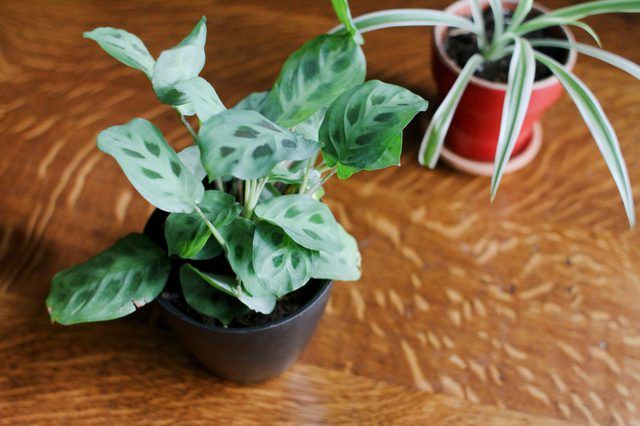
Things You'll Need
Clean, empty spray bottle
Distilled white vinegar
Water
Spoon or small shovel
Step 1
Make sure the mold really is mold. Sometimes salts and other dissolved minerals can leave a white residue on the top of your soil which looks like mold. From a distance, the two look similar, but upon closer inspection, you can see that the mold appears fuzzy, while the residue looks more crystallized.
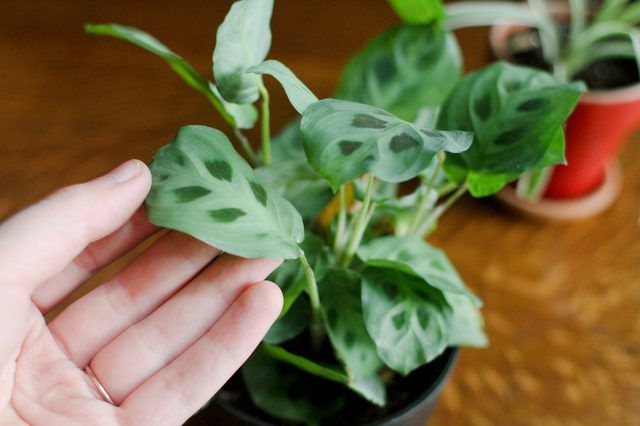
Step 2
Identify the cause of your mold. Most cases of soil mold are due to overwatering. Mold requires a constantly moist environment to grow and thrive. A good rule of thumb for houseplants is to water when the top inch of soil has dried out. This means that the soil below this one inch is still moist, but has begun to dry out. This watering schedule will keep mold from having a consistently moist home. Another cause of mold is high humidity. If your home has excessively high humidity, try a dehumidifier, or add a fan to the area to circulate more air.
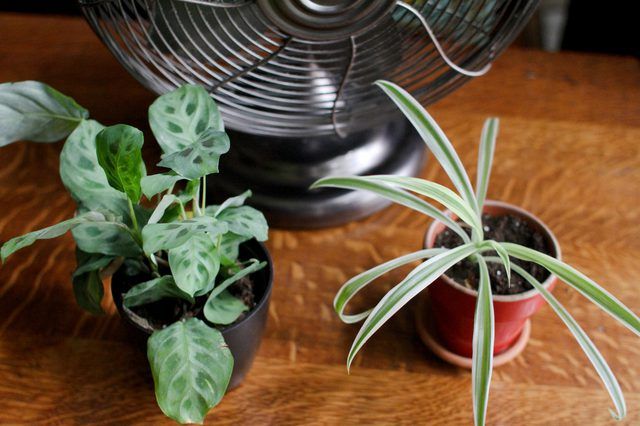
Step 3
Use vinegar to kill the mold. Mix your spray bottle with a tablespoon of distilled white vinegar with each gallon of water. Spritz this solution on the soil of your houseplant, covering the entire soil surface. Do not drench the area with the vinegar spray. You want to lightly mist the soil in about one to three passes, depending on the size of the pot. The vinegar changes the pH of the soil and kills the mold very quickly.
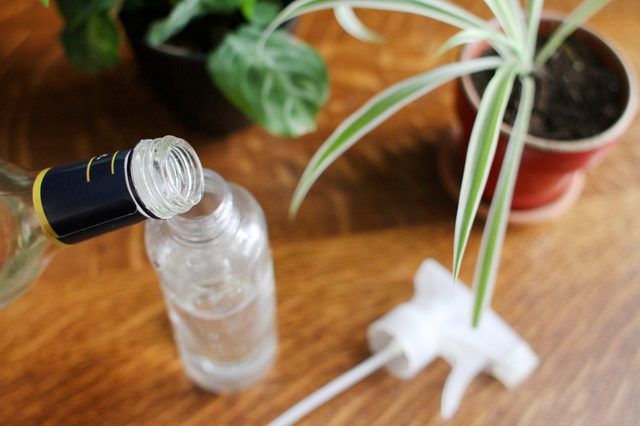
Step 4
Retreat the soil. If after three days, your mold isn't completely gone, mist the surface of the soil again. Soil mold is often killed with one treatment, but persistent soil mold may require two treatments. Also, retreat any time you see more mold reappearing.
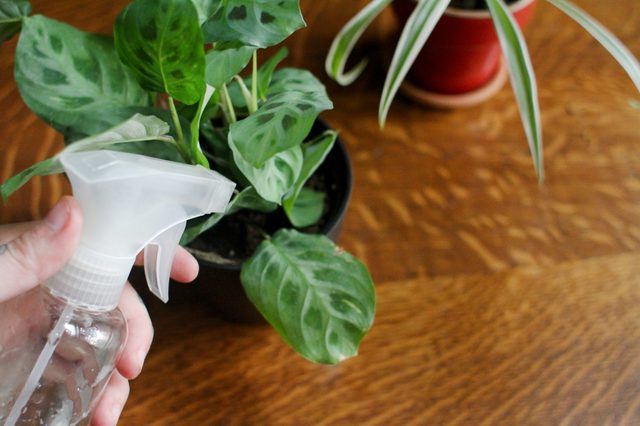
Step 5
If after several treatments, your mold is not going away, consider using a spoon or small shovel to remove the top layer of soil which contains the mold. You can just scrape the soil off that has molded, or remove the top half inch and replace it with fresh mix. It is important to note that mold will continue to grow until the issues of overwatering and excessive humidity are solved.
